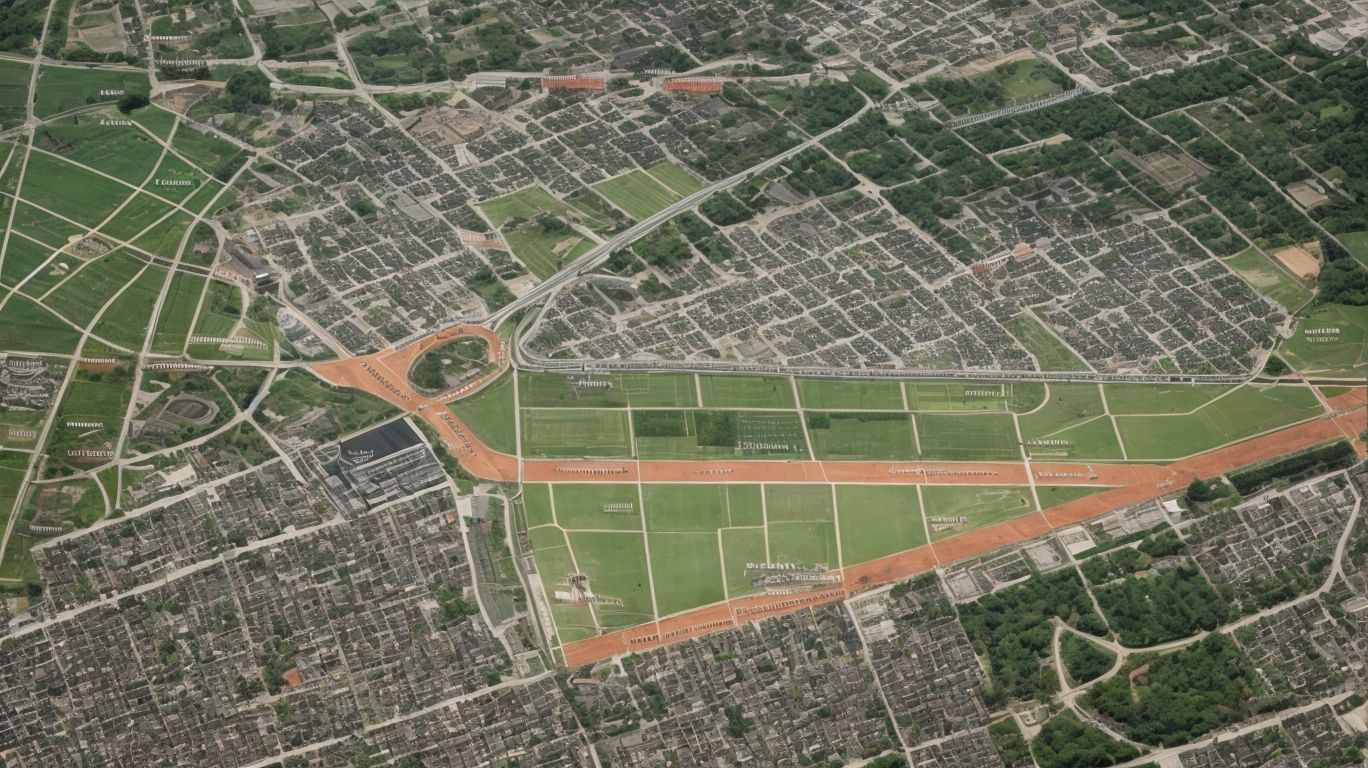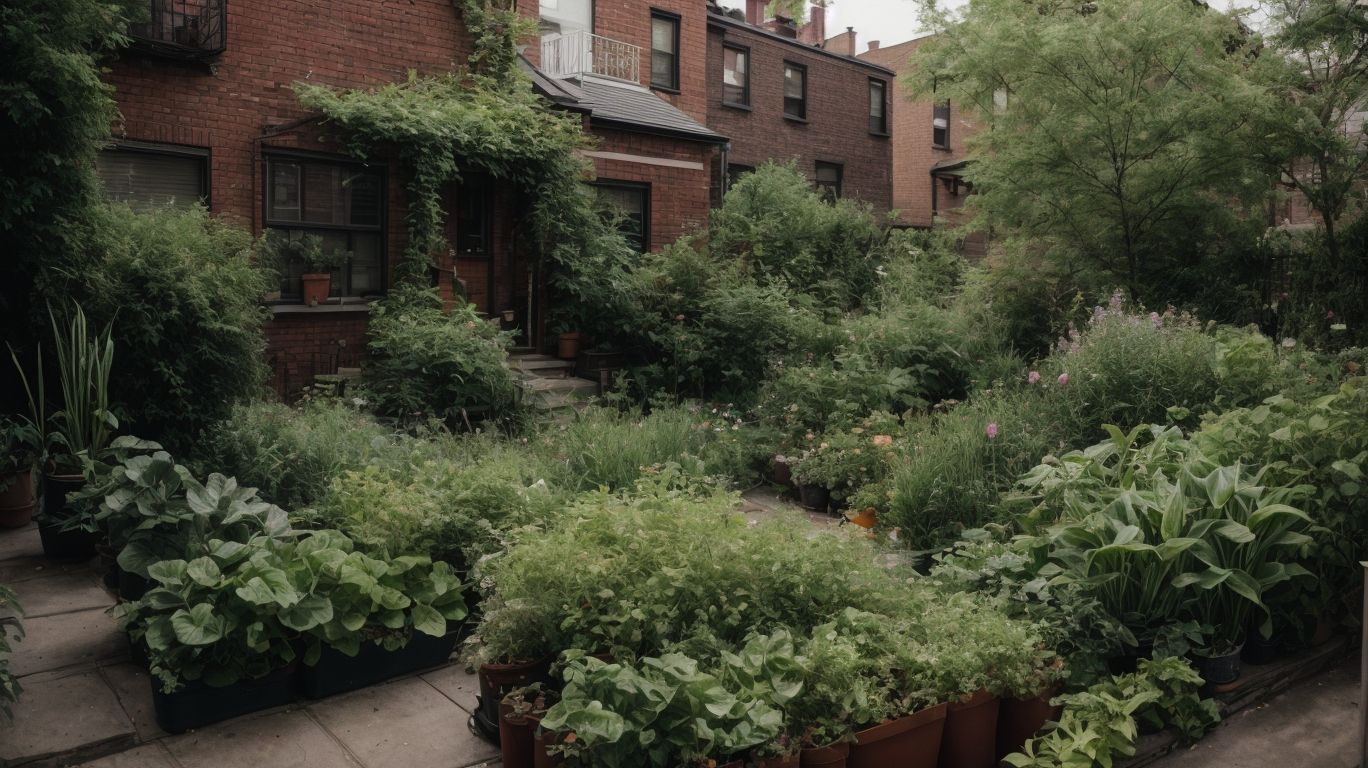The 95945 gardening zone is an essential aspect of successful gardening, as it determines the types of plants that thrive in a particular area. Understanding your gardening zone is crucial for selecting the right plants, managing challenges, and harnessing the benefits of gardening in your specific location.
In this article, we will explore what the 95945 gardening zone entails, how to determine your gardening zone, the best plants for this zone, the challenges you may encounter, and how to overcome them. We will delve into the numerous benefits of gardening in the 95945 zone, including an extended growing season, diverse plant options, and the personal satisfaction and health benefits that come with it. Whether you’re new to gardening or a seasoned enthusiast, understanding and navigating the 95945 gardening zone is key to a successful and rewarding gardening experience.
Key Takeaways:
What is a 95945 Gardening Zone?

Credits: Monkinthegarden.Com – Dylan Green
The 95945 Gardening Zone, part of the USDA Plant Hardiness Zone Map, provides essential information for gardeners regarding the climatic conditions and temperatures that influence plant survival and growth.
These gardening zones are defined based on average annual minimum temperatures and serve as a guide for gardeners to determine which plants are suitable for their specific region. For example, the 95945 Gardening Zone is characterized by specific temperature ranges, which can help gardeners in selecting plants that can thrive in their local climate. Understanding the gardening zone is crucial as it influences the success of gardening efforts; planting species not suitable for the zone may lead to poor growth or even plant death.
For gardeners, the gardening zone acts as a tool for making informed decisions about which plant varieties are likely to withstand their region’s typical winter lows. This allows them to optimize their garden’s potential and create an environment conducive to plant survival. By considering the specific attributes of their gardening zone, gardeners can ensure that the plants they choose have the best chance of flourishing and producing a healthy, vibrant garden.
How to Determine Your Gardening Zone?
Determining your gardening zone can be accomplished through the use of resources such as the USDA Plant Hardiness Zone Map and the AHS Plant Heat Zone Map, which offer valuable insights into regional climates and temperature ranges.
The USDA Plant Hardiness Zone Map is one of the most widely used tools for gardeners and horticulturists to understand which plants will thrive in their specific location. It divides the United States into 11 main zones based on average annual minimum winter temperatures. Similarly, the AHS Plant Heat Zone Map helps gauge the heat tolerance of plants and is especially useful for areas with high temperatures. By using these maps, gardeners can make informed choices about which plants are suitable for their gardens.
Using the USDA Plant Hardiness Zone Map
The USDA Plant Hardiness Zone Map, developed by the United States Department of Agriculture, categorizes regions based on average annual minimum winter temperatures, providing valuable insights into the types of plants that can thrive in specific zones.
The map is divided into numbered zones, each representing a 10°F difference in the average annual minimum temperature.
This information is crucial for gardeners, horticulturists, and agricultural professionals, as it helps them select plant species that are well-suited to the climate conditions of their specific zone.
By using the Zone Map as a guide, individuals can make informed decisions regarding which plants to cultivate in their gardens, ensuring higher chances of successful growth and overall garden sustainability.
Using the AHS Plant Heat Zone Map
The AHS Plant Heat Zone Map, developed by the American Horticultural Society, focuses on high-temperature ranges to guide gardeners in selecting plants with the best chance of survival in specific heat zones.
This map is a valuable tool for gardeners, landscapers, and horticulturists, helping them understand which plants are suitable for their regional climate conditions. By categorizing regions into numbered heat zones based on average annual minimum temperatures, the map assists in making informed plant selection decisions.
Whether you are planning a garden in a hot, arid climate or a region with cooler temperatures, the AHS Plant Heat Zone Map allows you to pinpoint plants that are most likely to thrive. It provides crucial insights into the adaptability and resilience of a wide variety of plant species to specific heat ranges.
What Plants Grow Best in 95945 Gardening Zone?

Credits: Monkinthegarden.Com – Scott Taylor
In the 95945 Gardening Zone, a diverse selection of plants thrives, including perennial favorites, a variety of vegetables, flavorful fruits, and an assortment of colorful flowers.
The 95945 Gardening Zone provides a favorable environment for a wide range of perennials, such as lavender, catmint, and coneflowers, which return year-after-year, requiring minimal maintenance. Enthusiasts can enjoy growing a plethora of vegetables like tomatoes, peppers, and zucchinis, while fruit-bearing plants such as strawberries and blueberries add a delicious touch to the garden. To enhance the aesthetic appeal, flowering plants like geraniums, roses, and tulips contribute vibrant hues and delightful scents to the landscape, making the 95945 Gardening Zone a paradise for plant lovers.
Vegetables
The 95945 Gardening Zone offers favorable conditions for cultivating a diverse array of vegetables, with the climate contributing to their overall survival and bountiful yields.
Root vegetables such as carrots, beets, and radishes thrive in the fertile soil and moderate temperatures of this region. Their underground growth allows them to withstand the occasional frost, making them well-suited for this area. Leafy greens like lettuce and spinach also flourish here, benefiting from the cool, mild climate. Additionally, tomatoes, peppers, and cucumbers, as heat-loving vegetables, can be successfully grown in this zone when provided with ample sunlight and consistent moisture.
Fruits
Fruit-bearing plants thrive in the 95945 Gardening Zone, taking advantage of the favorable hardiness zones to produce an abundance of delicious and nutritious fruits.
Among the fruit plants suitable for this zone, apple trees flourish with proper care and sufficient sunlight. Additionally, blueberry bushes are well-suited for the 95945 Gardening Zone, as they thrive in acidic soil and require minimal maintenance. Strawberry plants also excel in this region, benefiting from well-drained soil and regular watering.
Flowers
A colorful tapestry of flowers flourishes in the 95945 Gardening Zone, with the USDA temperature ranges providing an ideal environment for a stunning array of blooming botanicals.
From the vibrant hues of roses to the delicate petal formations of tulips, this region’s climate fosters a rich diversity of flora. The moderate temperatures create a welcoming home for hydrangeas and camellias, while the cool nights elevate the elegance of lilies and azaleas. The abundant sunlight encourages the graceful blossoming of sunflowers and zinnias, contributing to the picturesque allure of this enchanting garden zone.
What are the Challenges of Gardening in 95945 Gardening Zone?
Gardening in the 95945 Zone presents several challenges, including coping with extreme temperatures, managing drought conditions, and combating various pests and diseases that impact plant health and productivity.
The extreme temperatures in this zone can fluctuate dramatically, posing a significant threat to delicate plants. Drought management becomes crucial, requiring careful consideration of water conservation techniques, such as mulching and drip irrigation, to sustain garden growth. Pests and diseases, ranging from aphids to powdery mildew, demand consistent monitoring and adoption of environmentally friendly control methods, like organic pesticides and beneficial insects.
Extreme Temperatures
The fluctuation in extreme temperatures within the 95945 Gardening Zone poses a significant challenge for gardeners, impacting the survival and growth of various plant species.
During periods of high temperatures, plants can experience heat stress, leading to wilting, reduced metabolism, and even irreversible damage to cellular structures.
Conversely, low temperatures can cause frost damage, inhibiting growth and leading to plant death.
To mitigate these effects, gardeners can employ strategies such as:
- choosing hardy, native plant species
- applying mulch to regulate soil temperature
- providing shade and shelter during heatwaves
Drought
Drought conditions in the 95945 Gardening Zone necessitate careful water management strategies, posing a significant challenge for maintaining plant health and vitality.
The impact of drought on gardening in this region cannot be overstated. With scarce water resources, gardeners must adapt and employ effective water management techniques to ensure the survival of their precious plants.
One key solution is the implementation of drip irrigation systems, which deliver water directly to the roots of the plants, minimizing wastage and maximizing efficiency. Using mulch around plants helps to retain soil moisture, reducing the frequency of watering needed.
Gardeners are also turning to drought-resistant plants that require minimal watering, such as lavender, rosemary, and succulents. These plants are well-adapted to the arid conditions and can thrive with little water.
Pests and Diseases
Gardeners in the 95945 Gardening Zone face the ongoing battle against a variety of pests and diseases that can jeopardize the health and vitality of their plants, requiring vigilant management and control measures.
Among the common pests in this region are aphids, caterpillars, and spider mites, which can rapidly spread and damage crops. Diseases such as powdery mildew and blight pose significant threats to plant health.
To combat these challenges, 95945 gardeners often employ a combination of cultural, mechanical, and biological control methods, supplemented by the careful use of pesticides when necessary.
How to Overcome the Challenges of Gardening in 95945 Gardening Zone?

Credits: Monkinthegarden.Com – Ronald Lewis
Overcoming the challenges of gardening in the 95945 Zone involves selecting resilient plants, implementing proper watering techniques, and adopting effective pest and disease management strategies to ensure the thriving of garden flora.
When selecting plants for the 95945 Zone, prioritize drought-resistant varieties such as lavender, sedum, and yarrow, which can withstand the area’s arid conditions. These plants require minimal watering, making them ideal choices for water conservation while still adding beauty to your garden. Consider planting native species, like California poppies and sage, as they are naturally adapted to the local climate and soil.
For efficient water management, using drip irrigation systems or soaker hoses can help minimize water waste by delivering moisture directly to the plants’ roots. It’s essential to mulch the soil to retain moisture and reduce evaporation, especially during the hot summer months in the 95945 Zone.
To combat pests and diseases, integrate companion planting techniques, where certain plants are grown together to deter pests naturally. Regularly inspecting your plants for signs of infestations or diseases and promptly addressing them can prevent widespread damage. Implementing integrated pest management practices, including beneficial insect habitats and natural predators, can also help maintain the ecological balance in your garden.
Choosing Resilient Plants
Gardeners in the 95945 Gardening Zone benefit from selecting resilient plant varieties that can withstand the climatic challenges presented by the region, contributing to successful and sustainable garden landscapes.
Choosing resilient plants for gardening in the 95945 Gardening Zone is essential for creating thriving green spaces. These plants demonstrate remarkable adaptability to the local climate, with the ability to withstand temperature fluctuations, soil conditions, and precipitation patterns specific to the region. By prioritizing resilient plant varieties, gardeners can minimize the maintenance required to keep their gardens flourishing. This approach not only enhances the beauty of the landscape but also promotes environmental sustainability, as these plants reduce the need for excessive water, pesticides, and fertilizers. Embracing resilient plant species establishes a harmonious and enduring garden ecosystem, fostering a natural balance and resilience in the 95945 Gardening Zone.
Proper Watering Techniques
Implementing proper watering techniques is crucial for managing the impact of drought conditions in the 95945 Gardening Zone, ensuring optimal plant health and vitality.
One of the most effective strategies for combating drought conditions in the 95945 Gardening Zone is to implement deep watering methods, which encourage plants to develop deep, strong root systems that can access moisture stored in the soil. Deep watering involves applying a sufficient amount of water at longer intervals to penetrate deeply into the soil, promoting healthier and more drought-resistant plants.
Using mulch around plants can help to retain soil moisture, reducing the frequency of watering and minimizing water loss through evaporation.
Pest and Disease Management
Gardeners in the 95945 Gardening Zone can implement proactive pest and disease management measures to safeguard their plants, promoting a thriving and resilient garden environment.
One of the primary strategies for effective pest and disease management is maintaining good garden hygiene. This includes regular removal of fallen leaves, plant debris, and weeds, as these can harbor pests and diseases. Implementing companion planting can help deter pests and enhance plant resilience. Introducing pest-resistant varieties and using organic fertilizers can also contribute to a healthy garden ecosystem. Keeping a close eye on plant health and promptly addressing any signs of pest infestation or disease is crucial for successful garden management.
What Are the Benefits of Gardening in 95945 Gardening Zone?

Credits: Monkinthegarden.Com – Harold Lee
Gardening in the 95945 Zone offers the advantages of an extended growing season, diverse plant options, and the personal satisfaction and health benefits derived from nurturing a vibrant garden oasis.
The 95945 Gardening Zone, with its mild climate, allows for an extended growing period, enabling gardeners to cultivate a wide array of fruits, vegetables, and flowers. From juicy tomatoes to fragrant roses, the diverse plant choices cater to every gardener’s preferences and needs, fostering a sense of creativity and exploration.
The act of tending to a garden not only yields beautiful blooms and flavorful produce but also enhances mental well-being, reduces stress, and provides a source of physical exercise. There’s a special joy in nurturing plants from seeds to maturity, experiencing the tangible rewards of one’s labor.
This harmonious combination of extended growing opportunities, plant diversity, and personal fulfillment makes gardening in the 95945 Zone a deeply rewarding and holistic endeavor.
Longer Growing Season
The 95945 Gardening Zone provides gardeners with an extended growing season, allowing for the cultivation of a wider range of plant species and the opportunity to enjoy abundant harvests.
This extended growing season is a result of the favorable climate conditions in the area, characterized by mild temperatures and ample sunlight. Gardeners in this zone can take advantage of the longer frost-free period, providing more time for plants to mature and produce bountiful yields.
The benefits of an extended growing season are manifold, as it enables the cultivation of not only traditional crops but also a variety of exotic and specialty plants. This opens up avenues for experimenting with diverse flora, including perennials, vegetables, fruits, and herbs, which may not thrive in shorter growing seasons.
Diverse Plant Options
Gardening in the 95945 Zone provides access to a diverse array of plant options, catering to various horticultural preferences and allowing for the creation of visually captivating and ecologically rich garden landscapes.
Whether you prefer vibrant blooms, lush foliage, or low-maintenance succulents, 95945 Zone offers an assortment of choices that can transform any outdoor space into a stunning natural oasis.
From native wildflowers that thrive in the region’s arid climate to exotic specimen trees that add a touch of novelty, gardeners have the freedom to curate a unique haven right in their own backyard.
This variety also extends to herbs, vegetables, and fruit-bearing plants, ensuring that 95945 gardeners can enjoy not only the aesthetic appeal but also the practical aspects of homegrown produce.
Personal Satisfaction and Health Benefits
Engaging in gardening within the 95945 Zone offers individuals a source of personal satisfaction and various health benefits, contributing to overall well-being and a deeper connection with nature.
Spending time cultivating and tending to a garden allows individuals to engage in physical activity, fostering a sense of accomplishment and fulfillment. The exposure to natural sunlight provides a source of Vitamin D, essential for bone health and overall well-being. Furthermore, the act of nurturing plants and watching them thrive can have a profound effect on mental health, reducing stress and promoting relaxation.
Frequently Asked Questions
What is the significance of the 95945 gardening zone?
The 95945 gardening zone is a USDA Hardiness Zone that indicates the average minimum winter temperature in a specific location. This information is crucial for gardeners as it helps determine which plants are most likely to thrive in their area.
How can I find out which gardening zone I am in?
You can find out your gardening zone by entering your zip code on the USDA Hardiness Zone map. This will give you an exact match for your location, such as the 95945 gardening zone.
Can I plant any type of plant in the 95945 gardening zone?
While the 95945 gardening zone has a relatively mild climate, it is important to choose plants that are suited for this zone. This will ensure that your plants have the best chance of survival and growth in your specific location.
What are some of the best plants to grow in the 95945 gardening zone?
There are many plants that do well in the 95945 gardening zone, including lavender, rosemary, and fruit trees like apricots and peaches. It is also a great area for growing vegetables like tomatoes, peppers, and squash.
What are the biggest challenges of gardening in the 95945 zone?
The main challenge of gardening in the 95945 gardening zone is the potential for extreme heat in the summer months. This can be mitigated by choosing heat-resistant plants and providing proper shading and watering techniques.
Are there any specific gardening tips for the 95945 gardening zone?
Yes, some helpful tips for gardening in the 95945 gardening zone include choosing plants with shorter maturation times, using drip irrigation to conserve water, and providing proper mulching to retain moisture in the soil. It is also important to pay attention to the specific microclimates in your garden for optimal plant placement.


